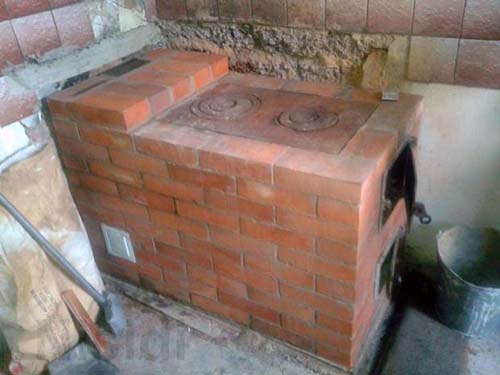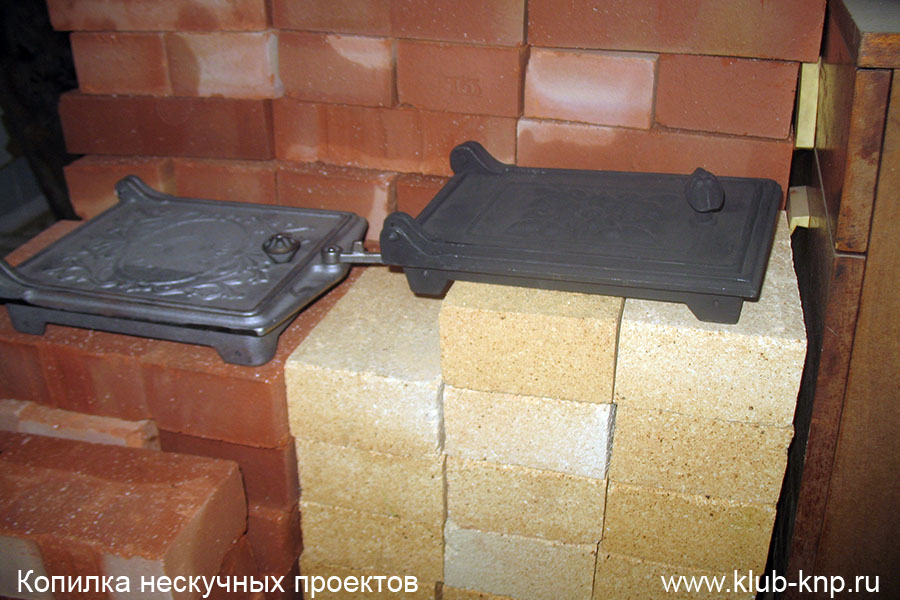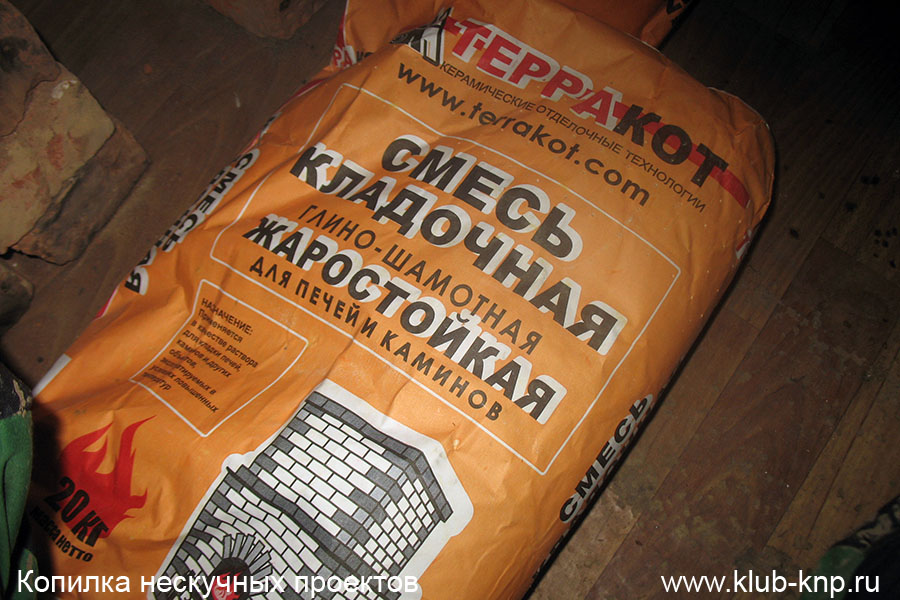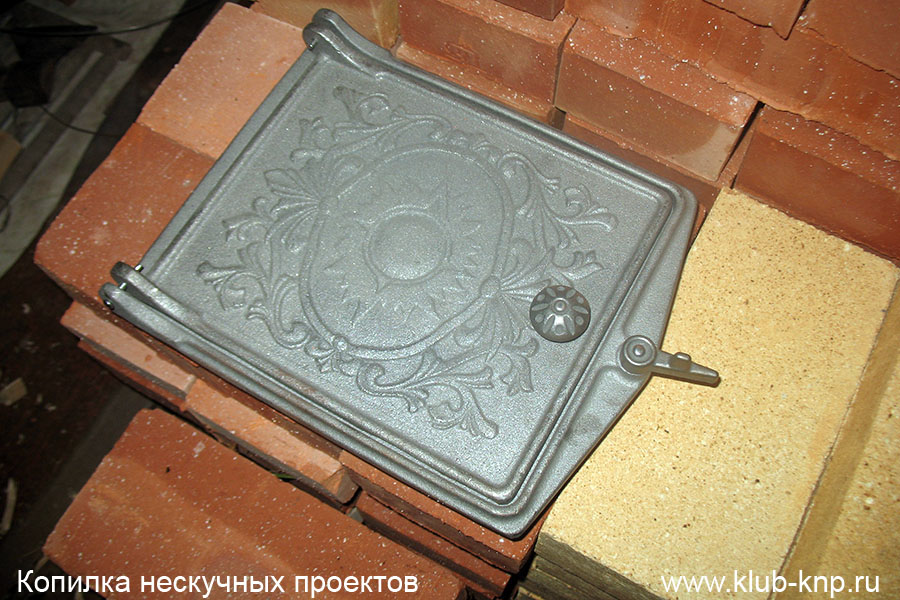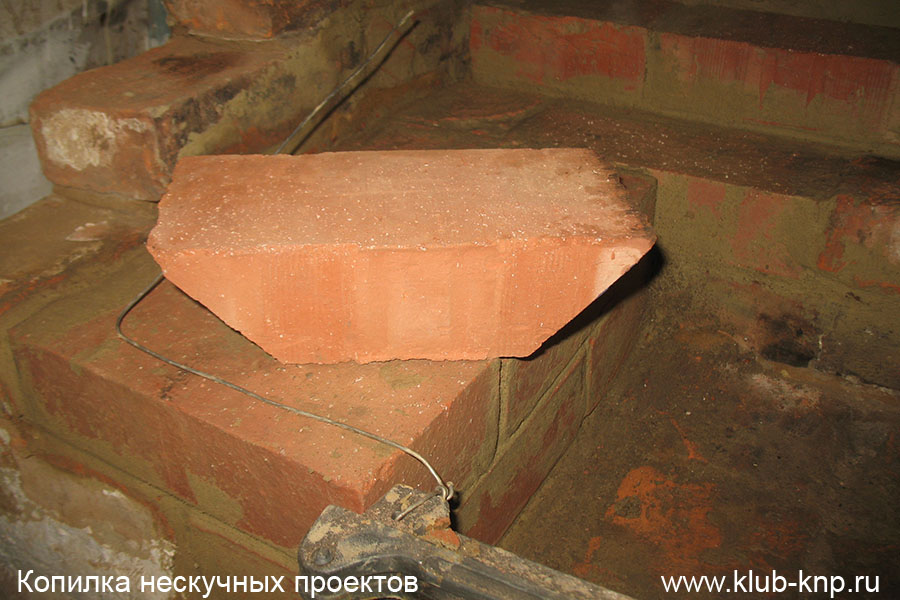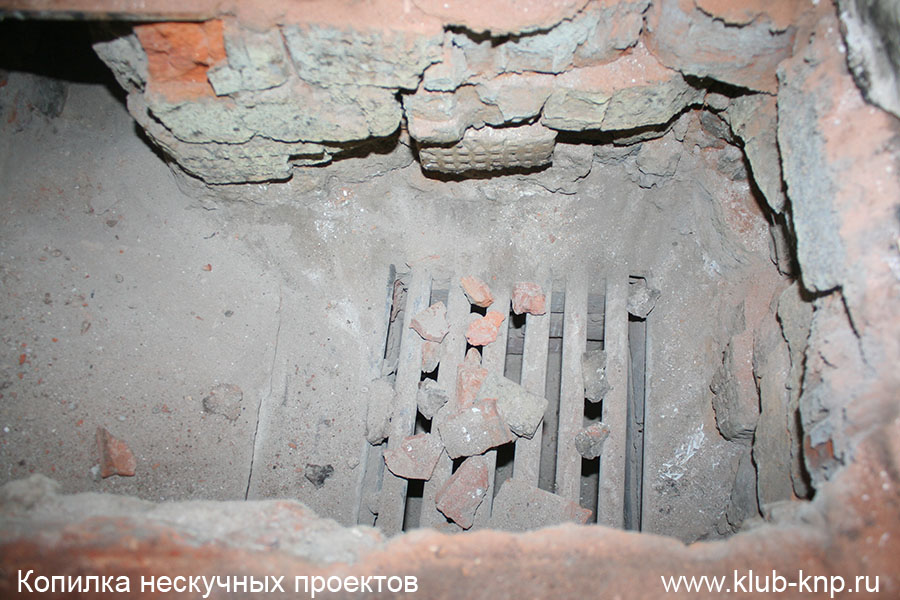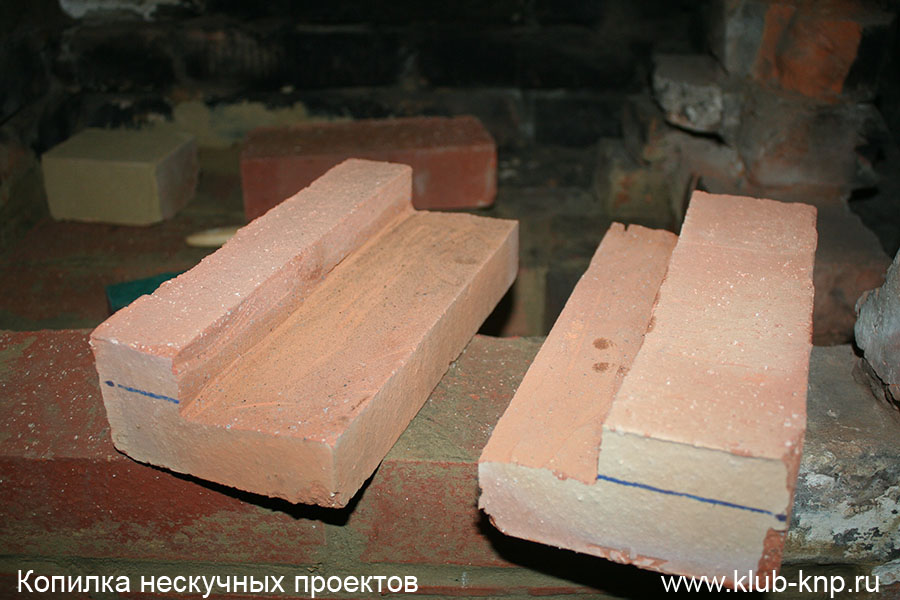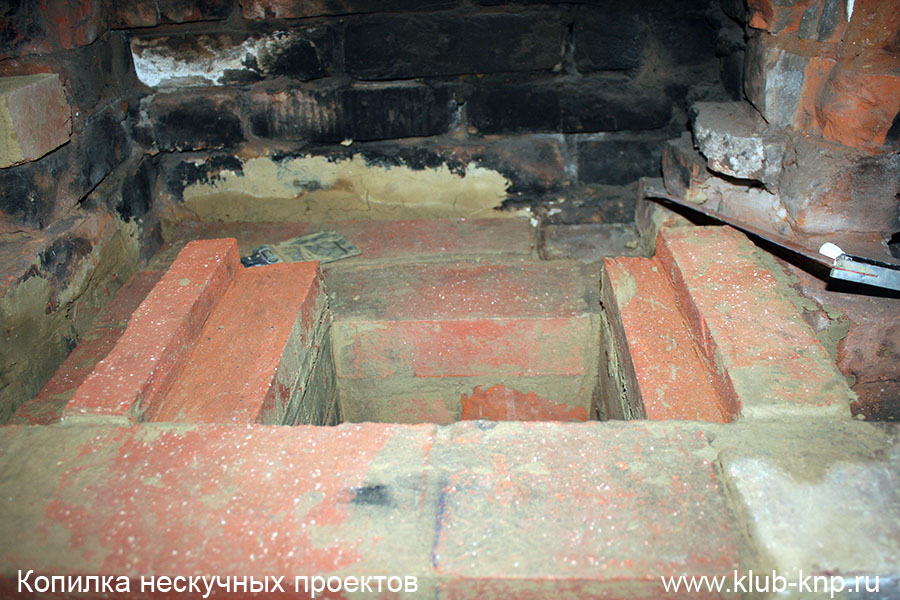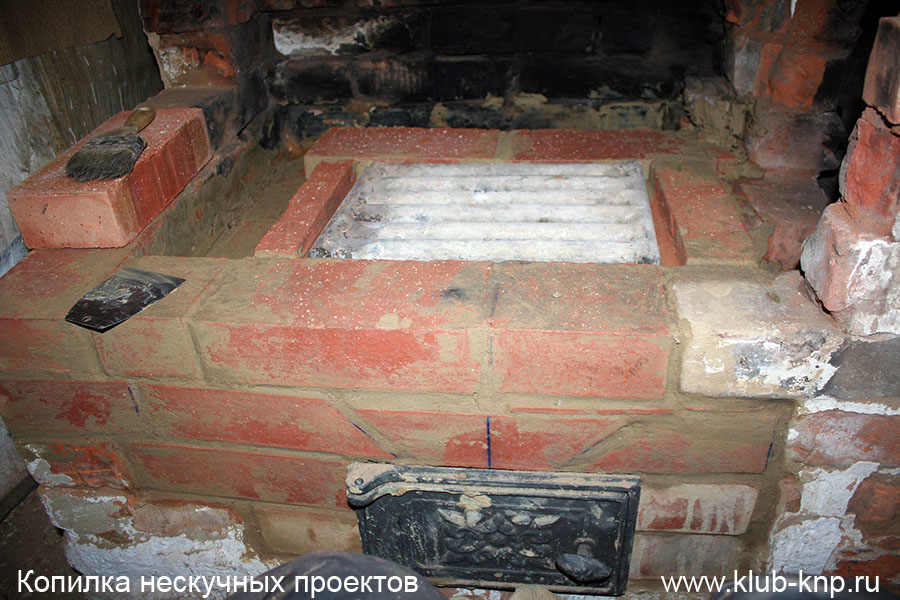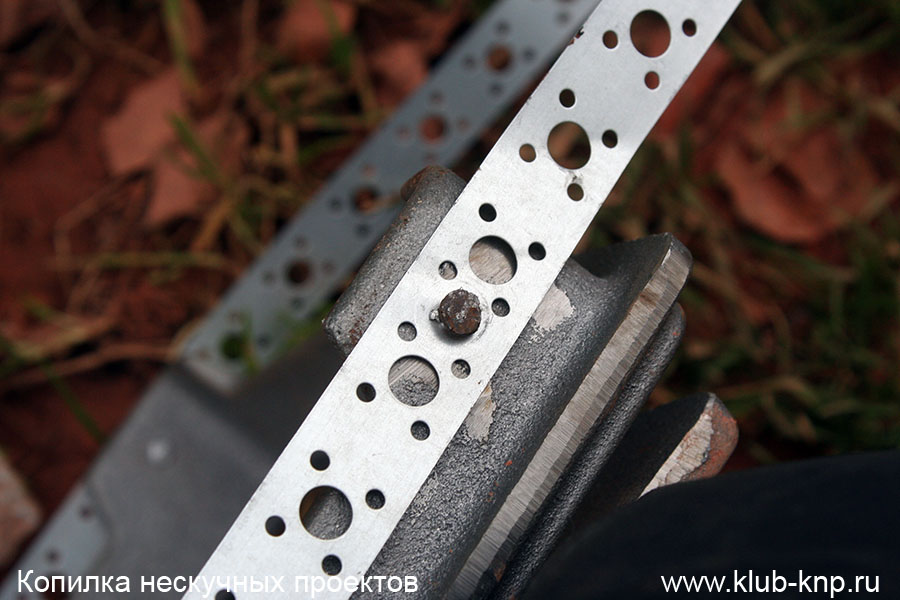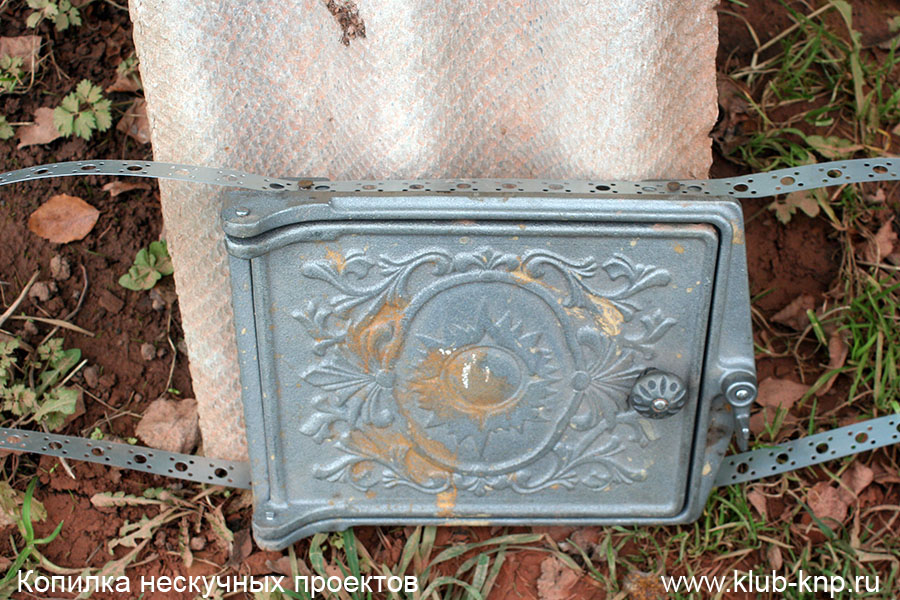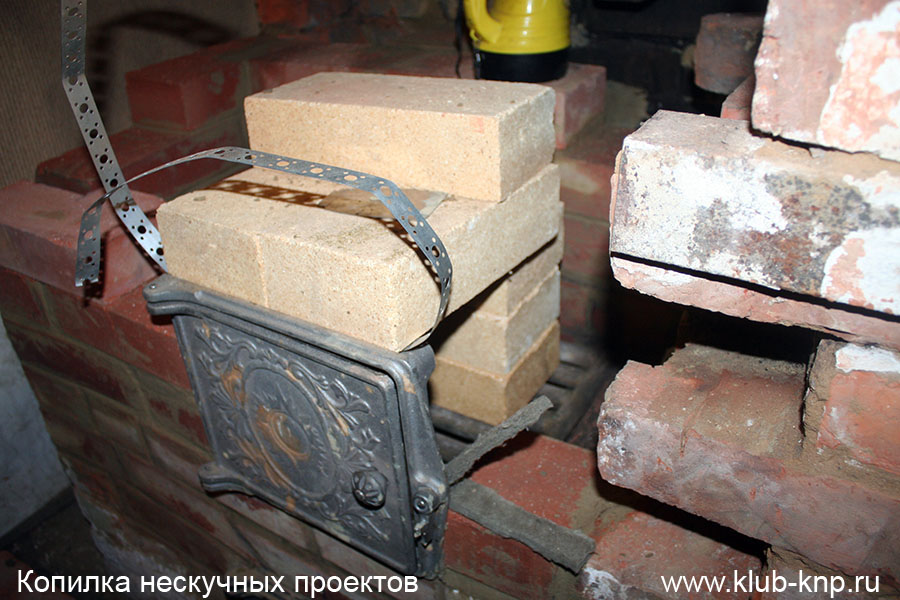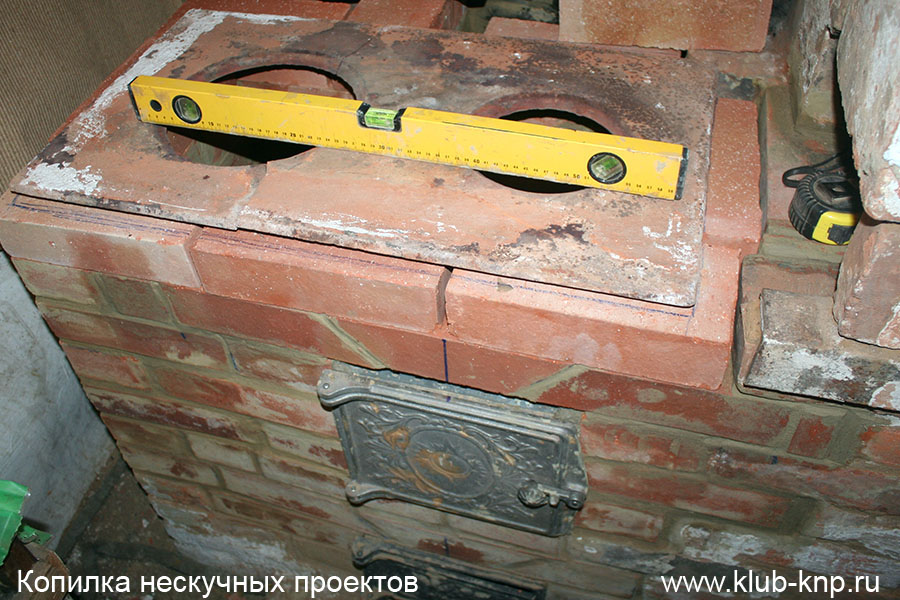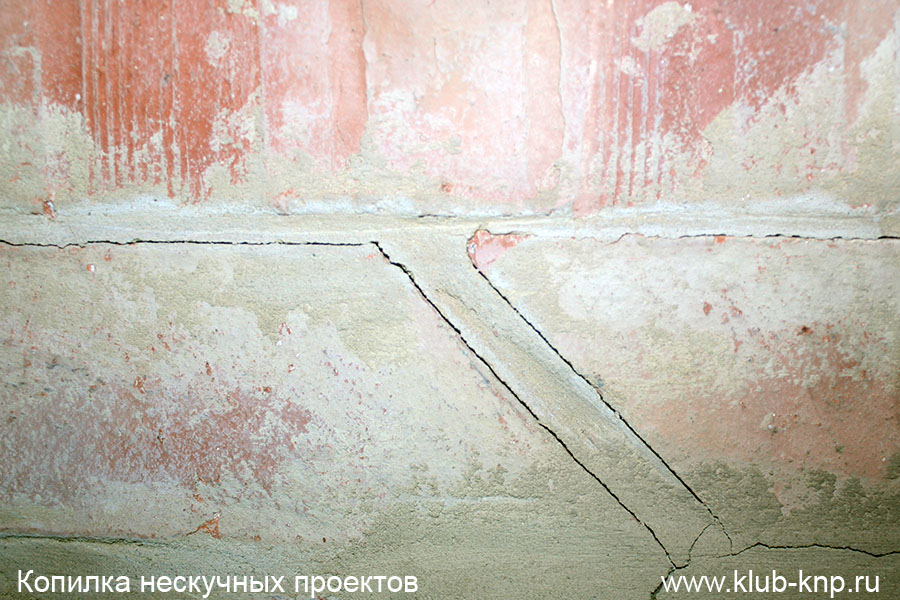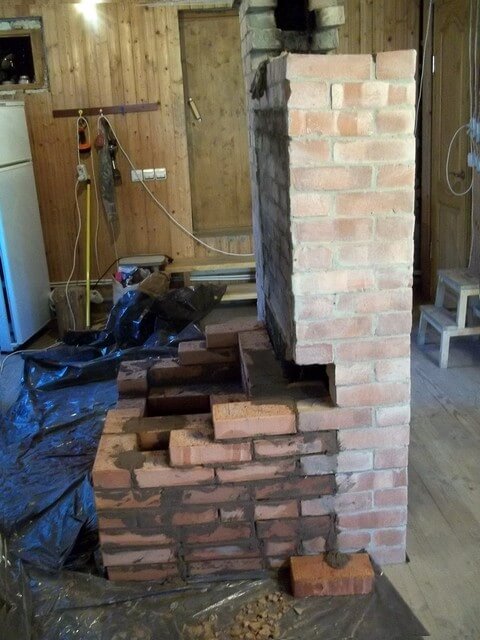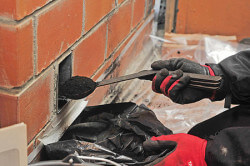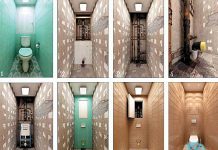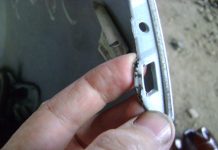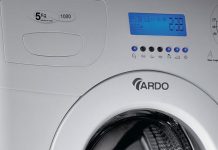In detail: do-it-yourself oven repair in a private house from a real master for the site my.housecope.com.
We bought a house in the village with a stone stove, which turned out to be in rather bad condition. I had absolutely no experience in this matter, so I did not immediately notice that she was “defective”. She was whitewashed and seemed quite decent. I was afraid to undertake its repair myself, but I realized that if you invite a stove-maker, it would cost a very decent amount. In addition, I thought that if I repair it myself, then there will be experience and additional confidence in my abilities. So I started practicing myself - everything worked out for me, and not even bad at all. I will say right away that while the final repair of the furnace is not completed, there are still all sorts of little things to be done in the spring, but it is already working and is working well. So do not be afraid and feel free to take on the independent repair of the brick oven: I think you will succeed too. And now useful information from my experience, how to repair a brick oven with your own hands, both in the country and in a private house.
- Brick. At the construction market I bought a brick of the Tula brick factory, which was called "stove brick". Professionals say that in general there is no special oven brick - any building ceramic brick of any brand will do, even M-75 - the main thing is that it is free of cracks. But, by the way, I really liked the brick that I bought - smooth, without cracks, much better quality than the usual building brick. It cost 15 rubles apiece, and I took as many as 100 pieces. In some stores, they even sell them for 25 rubles apiece. By the way, 7 pieces were not enough, and I had to use the old one, which I took out of the oven. I also bought 20 pieces of fireclay bricks at 49 rubles apiece. Fireclay bricks can withstand very high temperatures, as much as 1800 degrees. I wanted to lining the firebox with them, but then it turned out that it would not work. So this expensive brick lies and waits in the wings - it will come in handy for a new oven.
| Video (click to play). |
- Furnace casting. These are latches, furnace and blower doors, cleaning doors, cooking floor. The so-called scar casting (Zavod "Litkom") is the leader in quality. There is also a supplier from Balezino, but the quality there seems to be worse. I took the Rubtsov furnace door, and the ash door, as less important, I bought the Balezin one. I paid 1,500 rubles for everything. I did not consider imported casting: it is, of course, much better quality, but it also costs decent: I thought it was not advisable to buy it. I did not buy a cooking floor (stove): for now I decided to use the old one, which had been split, until spring. I didn't buy the grate either - I used the one that was in the old oven. By the way, it's homemade. Do-it-yourself brick oven repair did not include replacing valves and cleaning doors from me yet, so I did not buy them. I will do all this in the spring.
- Basalt cardboard BVTM used for sealing when installing metal parts: cooking deck, door. I bought two sheets of 5 mm thickness at 156 rubles apiece. This was quite enough and even remained, but I think that it will still come in handy: during the life of the furnace, it may well be required.
- Wire and metal tape. It is used when installing doors. I'll tell you more about this a little later. I found the wire in the garage, and bought the tape in the store (I gave 500 rubles for 20 meters) - the same as in the photo.
- Drill with mixer attachment - used to prepare the solution.
- Brush (drill attachment) - used to remove soot and old mortar from bricks in some places.
- Grinder + disc for metal + metal disc for concrete - mainly used to cut bricks. It turns out quickly, evenly, but hefty dusty, so buy another respirator. Sometimes it was required to cut the metal too: now a corner of some of the oven sticks out - I cut it off completely, then the grate cut. The photo shows an example of using a grinder when working with bricks. This is a key brick, which is placed over the firebox door.
- Building level - it is clear why.
- Gon - it is better if it is long, I had a short one. I mainly used it to mark out bricks.
- Roulette - for measurements of all kinds.
- Marker - they marked the brick. I took the marker from my daughters from drawing sets and will not return it, because it has worn out in the trash.
- Trowel, trowel - used to work with the solution. Basically I used a 70 mm wide spatula, it seemed to me that it is more convenient for them to work than with a trowel.
- Hacksaw for wood (old) - used to cut a brick out of the oven at the seam. An irreplaceable thing. Sometimes it was required to take something smaller, then I used canvas for metal.
- Hammer - used to neatly straighten a newly laid brick. And so, for other purposes, the hammer will find application.
- Sponge for washing dishes - wetted the surfaces of bricks prepared for mortar with water.
- Buckets - for mortar and for soaking bricks in water.
- If non-critical cracks need to be repaired, then, of course, it is not necessary to disassemble the oven. We melt it - the seams expand. Then we thoroughly clean out the old mortar until we clean the brick well at the crack. It is convenient to work with a cloth for metal.
- If a cracked brick needs to be replaced, then an old wood saw comes to the rescue for cutting bricks from masonry along the seam. Then carefully remove the brick and clean the bricks in the masonry, preparing them for mortar.
- If most of the oven is in critical condition, then you have to take out a lot of bricks. It is very dusty. I did not think of separating the stove from the room with foil, and my whole house was covered with a layer of dust. We remove the bricks until we reach those that hold tight. But turn on your head, otherwise you can disassemble the whole stove. The fact is that some bricks that wobble a little can be left in the masonry. Then they will bond with their new neighbors, and everything will be fine. And, of course, we also take out all the cracked bricks, and also the burnt ones. Here, look at the photo of how my firebox looked like. She had to take it all apart and put it all over again. I took out about a little over 100 bricks from the entire oven.
After you have prepared the seams for repair (I wrote about this above), we wet the bricks with water using a sponge and put the mortar into the seam: we take it a little bit and with a trowel we "chase" the seam - we seal it with the edge of the trowel until the metal practically stops penetrating into the solution.
Do-it-yourself brick stove repair is very often a furnace repair. First of all, I took out all the burnt bricks and prepared the firebox for new masonry. But there was one serious problem: one of the walls of the furnace turned out to be load-bearing in the entire structure - let's say, the pipe rested on it. Therefore, I decided not to remove the bricks from this wall, but simply shifted the firebox to a half-brick to the side and laid out an absolutely new firebox wall. There is nothing particularly difficult in the masonry itself - just do everything carefully, take your time and try to keep all the bricks tied. Under the grate, I cut out the bricks with a grinder so that it would lie in the grooves, as it were. The grate must lie freely under its own weight with a gap of 5 mm from the bricks, otherwise it will expand from heating and begin to destroy the masonry. Some people advise to fill these free gaps with sand, but I did not - they themselves will fill with ash.
All kinds of doors (furnace, blower, cleaning) are installed so that there is a gap of 5 mm between them and the bricks, otherwise they will destroy the masonry when heated. The doors are fastened either to wire or to tape. They are attached to the wire like this: four pieces of wire are tied to the door (there are special holes in the doors), and then these mustaches are embedded in the masonry. Places for embedding (seams) must be pre-cleaned. If the door wobbles a little after the mortar to be laid has dried, then bend the wire with pliers - as if pulling it. In this way, I fixed the blower door. I did not like this method - the door is not very securely mounted in the masonry.
But the fire door, as a more responsible one, I fastened with a metal tape. I riveted two strips to the door with rivets, which I made from cut nails, and walled up this whole structure in the masonry. It turned out perfect. Therefore, I almost forgot about the basalt sealant, which is placed between the metal of the doors and the bricks. You can immediately close it up, and then you can fill it in a 5 mm gap.
The cooking deck was also installed with side gaps from bricks of 5 mm. It lies with me just under its own weight, but along the perimeter under it there is a basalt sealant in two layers. So that the cooking floor was flush with the plane of the stove, I cut out grooves in the bricks with a grinder along the perimeter of the stove.
This time, he did not repair the valve on the pipe and the cleaning doors for soot - he postponed this business until spring. But the general approach is the same.
Ideally, if the oven dries up by itself. This is long enough: it can take a month or two. Drying times will depend on the scale of the repairs performed. Another drying option is with gentle heating. In this case, it is important not to overdo it, otherwise the seams will crack. And it worked out for me: the upper two rows of the stove, newly laid out, cracked at the seams, because I hurried and went out ahead of time (5-7 days) to the normal mode of the furnace.
In my case, this is not critical: in the spring I will move the heels of the bricks again, and in some places I will simply rub the cracks. But nevertheless, it is still unpleasant. And one more thing: the criterion that the stove is dry is that there is no condensation (water droplets) on the cleaning doors and on the valves.
- weak or no draft, slow combustion of fuel, penetration of smoke into the room in the case of an open firebox door, as well as in the wind;
- the appearance of dark spots on the outer surface of the smoke channel due to excessive moisture;
- loosening and detaching the doors of the fuel combustion device and other furnace components;
- rapid heat loss after completion of the combustion process;
- weak or excessive heating of surfaces and their areas;
- cracks in the masonry that cannot be repaired;
- installation of stove appliances of inappropriate dimensions, various irregularities inside the smoke ducts.
The main thing is to start repairing the stove on time, without putting yourself and your loved ones at risk. Only a working device can guarantee both fire and sanitary safety. The nature and complexity of the work determine the scale of the repair, which can be current, medium or major.
Weak draft or its absence can arise, for example, due to the accumulation of a large amount of cold air in the chimney during a long break in the operation of the stove. However, there are other reasons: obstruction of the canal (clogged with soot), squally wind outside, there is no access to air, the flow of which could support combustion.
In this case, you need to light the fire not with paper, but with a dry substance, for example, a piece of rubber. In this case, fuel (kerosene, etc.) should not be used.
If more than a year has passed since the moment the soot was "burnt out" in the chimney, most likely it will be clogged.To eliminate this problem, you need to act as follows: first try to get rid of the soot by pouring a little coarse salt into the burning stove and immediately closing the shutter. Burning down, the layer of soot begins to crack strongly, pieces of it fly out of the chimney. If this method turns out to be ineffective, you will have to apply manual cleaning. There is a special door for this.
One of the signs that cracks have formed in the brickwork is the strong smoke from the stove. In this case, the seams must be sealed with a clay-sand mixture, adding salt and crushed asbestos fiber to the solution. The last ingredient is used for elasticity. In terms of consistency, the mixture should turn out to be not very viscous, but not liquid either: after drying, a too greasy solution will crack, and a thin one will not provide the required strength, which will lead to the destruction of the masonry. To save time, you can purchase a ready-made mixture in a specialized store. An instruction is attached to it, following which you can quickly and easily dilute the solution and perform all the necessary work.
Another problem is the need to replace the old, burnt-out brick with a new one. To do this, the surface must first be prepared: remove dust and clay, moisten, then put a clay cake there. A new one is put in place of the burned-out brick, after immersing it in water and applying the prepared mixture to it both from above and on the sides to fix the seams. It is necessary to use the same mortar as for filling the cracks.
Before proceeding with the sealing of the joints, they need to be prepared: remove the residual clay, rinse thoroughly with water using a brush, then prime with heat-resistant glue (a 50% solution is suitable). When grouting the joints, make sure that the repair mixture fills the joints to the end, leaving no voids. If too large a gap has formed in the masonry, in addition to the mixture, a ceramic cord must also be placed in it. Due to its physical properties, it not only withstands open fire, but also very high temperatures - over 1000 degrees.
Ceramic cord is often counterfeited, therefore, before purchasing it, you need to bring a lighted match or lighter to it in order to evaluate the heat resistance of the product. The cord is placed in the seams of the masonry along the perimeter of the cast-iron plate, using heat-resistant glue for fixing.
To protect the elements of the stove that do not need to be repaired, they must be covered with masking tape.
If it is necessary to replace the grates in the oven, an expansion joint with a thickness of 5 mm must be made between them and the brickwork.
If the firebox door falls out, it can be secured using steel wire. However, you first need to disassemble the brickwork around the sash.
Pre-furnace plates, as a rule, cannot be repaired: perforated and rusty elements are simply replaced with new ones. In this case, the old product is removed, the nails are removed, then a felt soaked in liquid clay is placed on the bottom, and a new sheet is placed and nailed on top.
If there is a need to replace the lining, the same brick is taken for the new brickwork that was used for the old one. The thermal expansion coefficient must remain the same.
In case of damage to the firebox lining or hearth, more serious work will be required. As noted earlier, it is necessary to maintain the same coefficient of thermal expansion, therefore, the homogeneity of the selected material, namely brick, is extremely important.
These types of work include the following: replacement or repair of faulty elements, as well as the return of the furnace once lost performance. Many people think that such a reconstruction can only be done by an experienced stove-maker. However, this opinion is erroneous: any home craftsman can do this kind of work.
If it is necessary to replace the lining, experts advise against touching the main masonry.The wall of the stove must be dismantled from the bottom of the ash pan to the height of the firebox, without affecting the ribs, then cleaned of rubble after disassembling the old lining and lay out a new one without fastening it to the masonry of the walls. The thickness of the seams should not exceed 2 mm.
The upcoming transition of the stove to another type of fuel is a serious task, and each stove-maker solves it in his own way. As an example - one of the methods. First you need to lay out the walls of the firebox using fire-resistant bricks. In this case, it is required to use a solution that can withstand high temperatures and open fire. The sides of the firebox must be equipped with small slopes so that at the moment of heating the coal falls down, closing the grate. In this case, it is important to use only high-quality bricks.
Repair of a sauna stove is carried out in the same way as the restoration of a conventional heater. The only difference is in preventive measures that need to be carried out more often. This is due to the higher temperature regime of the bath device. In this case, special attention should be paid to both the fire resistance of the brick and mortar. If the tile is broken, it is forbidden to use such a stove until it is replaced with a new one.
If an external examination of the rear wall of the structure does not reveal serious damage, then the device is suitable to become a frame for repair work.
When inspecting the oven, the following facts may come to light:
- The device does not have an additional blower, the so-called summer, which enhances the furnace draft when it is fired up.
- Changing the location of the blower: instead of the lower part of the firebox (under the door), it is placed on the side of the end of the furnace.
In addition, there may be no additional hood above the hob, and the heating of the room is less on the side where another wall is located. These errors also need to be corrected.
The second minus is the location of the view relative to the upward-going smoke channel. From an ergonomic point of view, this valve cannot be positioned horizontally all the time. This leads to the disruption of her work or, as the stove-makers aptly put it, to “the tears of the stove”. The fact is that in winter, especially during frosts, a lot of condensate accumulates in the equipment, which, mixing with soot, turns into a solution of carbonic acid of high concentration, which leads to the gradual destruction of the masonry.
So, thanks to an external examination, it was possible to identify problem areas that need to be worked on. After that, you can start repairing the brick oven with your own hands.

